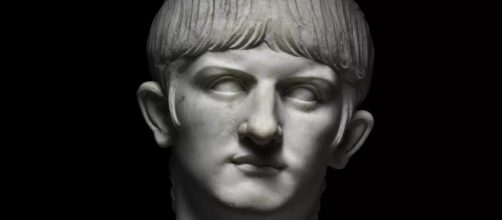A new show at the British Museum proposes that Nero was not the full-blown bad guy that history makes him out to be. The show title “Nero: The Man Behind the Myth” clues you right off to doubt his sorry reputation. You’re asked to see him beyond the infamy for which he’s popularly known - fiddling while his city burned.
Rewriting history
History tells us that Nero was only 16 years old when he ascended the throne and suffered a violent death at age 30. If that doesn’t get your sympathy, there are other things to take into account. Artnet News quotes Thorsten Opper, a British Museum curator specializing in ancient Rome, saying, “The Nero of our common imagination is an entirely artificial figure.” “Entirely”?
Never mind the bad stuff, Opper sounds like he’s saying. Don’t concern yourself with what the museum’s own press release acknowledges – Nero’s “cruelty, debauchery, and madness.” Put out of your mind his slaying of one or two of his wives and his mother, Agrippa (by all accounts a homicidal maniac). You also need to let Nero’s megalomania go – his insatiable desire to see statues of himself all over Rome. Never mind all that. As Opper suggests, Nero did some good stuff, too.
Redeeming value?
What good stuff? As The Observer tells it, Nero braved public chariot races and performed on stage as an actor playing characters (including the mother-murdering Oedipus). History also says that Nero’s city thrived under his rule.
So, if you’re a theater buff, a sports fan, and moony about money, he wasn’t all bad.
If all that is true, Artnet News asks a good question: “How did the Nero of history morph into the caricature of evil taught in schools today?” Francesca Bologna, exhibit curator answered that her goal wasn’t to whitewash Nero's shady life but to offer “very different perceptions” from his monster image. Artifacts retrieved from the great fire in AD64, now on exhibit in the British Museum, are intended to attest to the propaganda against Nero.
Storytelling relics
One of these relics, Nero’s likeness chiseled out of marble, defines his eyes as hollow as if to underscore his lack of humanity. As Artnet points out, “many busts” maligned the emperor in that way.
They had been reworked after he died into what Opper described as “a stereotype, an artificial image” that differs from those created during his rule.”
The Observer took particular notice of a relic that I submit makes the museum’s best case for Nero as a sympathetic character. It’s a coin of Nero and mommy dearest with overlapping heads, which makes you wonder if the emperor lived under his mother’s murderous thumb.
Another telling relic, this one an ivory figure of Nero as an actor. Such artifacts are meant to remind viewers to “judge the emperor’s true nature.” I don’t know about you out there in reader land, but I can’t get past his murderous nature. It’s hard to forget that after blaming the burning of Rome on Christians, he burned them all alive.
Nagging question
But wait, if the British Museum is asking people to see Nero as unfairly badmouthed because he trod the boards, shouldn’t we cut Hitler some slack because he painted?


